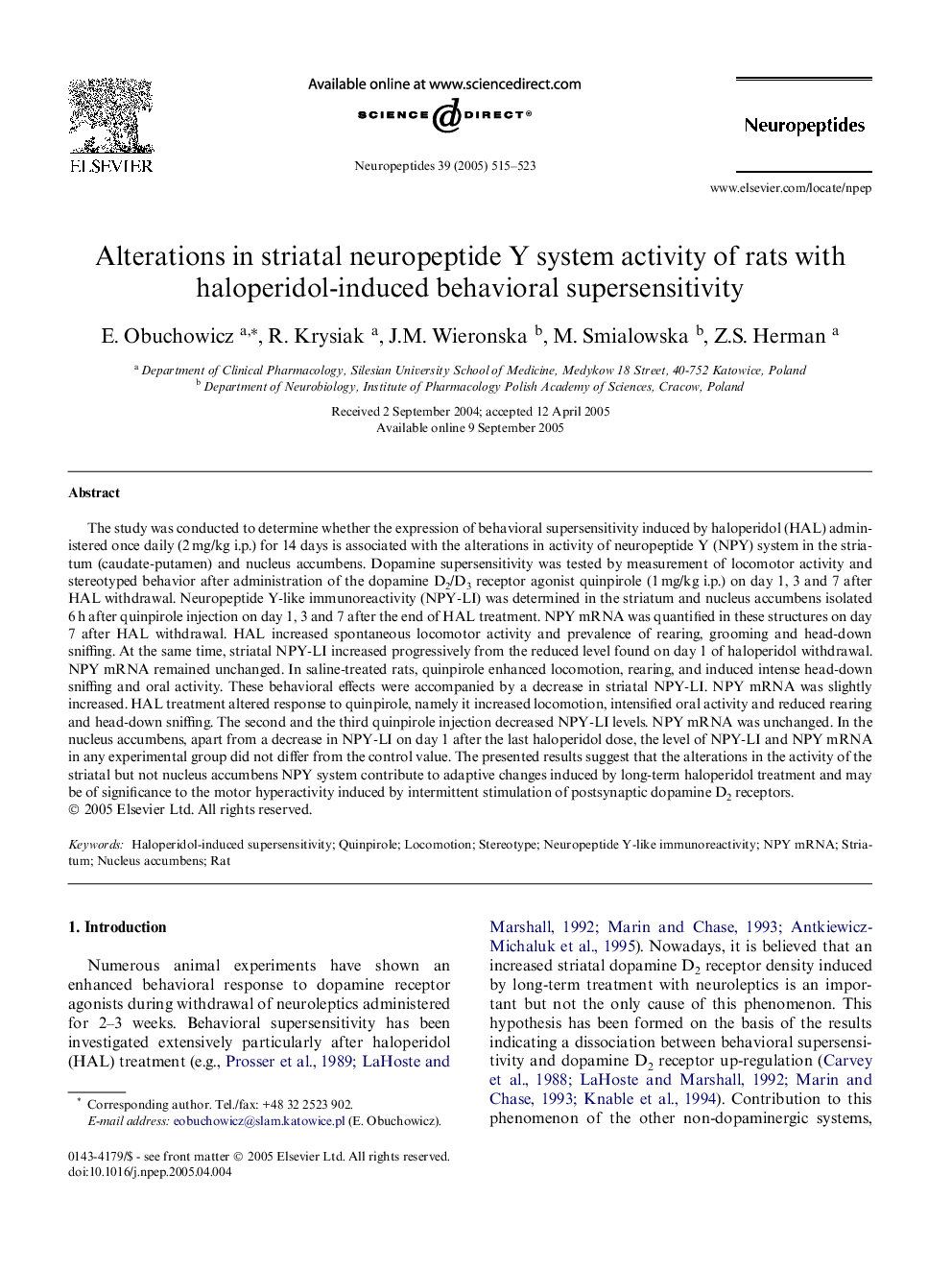| Article ID | Journal | Published Year | Pages | File Type |
|---|---|---|---|---|
| 9118749 | Neuropeptides | 2005 | 9 Pages |
Abstract
The study was conducted to determine whether the expression of behavioral supersensitivity induced by haloperidol (HAL) administered once daily (2Â mg/kg i.p.) for 14 days is associated with the alterations in activity of neuropeptide Y (NPY) system in the striatum (caudate-putamen) and nucleus accumbens. Dopamine supersensitivity was tested by measurement of locomotor activity and stereotyped behavior after administration of the dopamine D2/D3 receptor agonist quinpirole (1Â mg/kg i.p.) on day 1, 3 and 7 after HAL withdrawal. Neuropeptide Y-like immunoreactivity (NPY-LI) was determined in the striatum and nucleus accumbens isolated 6Â h after quinpirole injection on day 1, 3 and 7 after the end of HAL treatment. NPY mRNA was quantified in these structures on day 7 after HAL withdrawal. HAL increased spontaneous locomotor activity and prevalence of rearing, grooming and head-down sniffing. At the same time, striatal NPY-LI increased progressively from the reduced level found on day 1 of haloperidol withdrawal. NPY mRNA remained unchanged. In saline-treated rats, quinpirole enhanced locomotion, rearing, and induced intense head-down sniffing and oral activity. These behavioral effects were accompanied by a decrease in striatal NPY-LI. NPY mRNA was slightly increased. HAL treatment altered response to quinpirole, namely it increased locomotion, intensified oral activity and reduced rearing and head-down sniffing. The second and the third quinpirole injection decreased NPY-LI levels. NPY mRNA was unchanged. In the nucleus accumbens, apart from a decrease in NPY-LI on day 1 after the last haloperidol dose, the level of NPY-LI and NPY mRNA in any experimental group did not differ from the control value. The presented results suggest that the alterations in the activity of the striatal but not nucleus accumbens NPY system contribute to adaptive changes induced by long-term haloperidol treatment and may be of significance to the motor hyperactivity induced by intermittent stimulation of postsynaptic dopamine D2 receptors.
Keywords
Related Topics
Life Sciences
Biochemistry, Genetics and Molecular Biology
Endocrinology
Authors
E. Obuchowicz, R. Krysiak, J.M. Wieronska, M. Smialowska, Z.S. Herman,
